Key points
- Muscles can only contract and relax, so they always work in pairs called antagonistic muscles.
- Skeletal muscle is joined to bones. Its cells contract to make bones move and joints bend.
Video
Skeletal muscles always come in pairs, just like trainers. But there is a little bit more to it than that.
Skeletal means of the skeleton and skeletal muscles move our body parts by transferring force to the bones through tendons, but skeletal muscles can only exert force by pulling, they cannot push, so moving a joint back and forth requires an antagonistic pair, which is just a fancy way of saying two muscles that pull in opposite directions.
For example, in your arm, your biceps and triceps are antagonistic pairs when you curl your arm the bicep contracts and pulls the tendons that cause your arm to bend, while at the same time the tricep muscles relax.When you extend your arm the opposite happens. Your tricep muscles contract and pull, while your bicep muscles relax, causing your arm to straighten back out.
You can find antagonistic pairs in your legs too. Just extend and curl and see which muscles tighten when, it's also a great way to show off the trainers.
Can you answer these questions based on the video?
1. What does ÔÇśskeletalÔÇÖ mean?
2. In which directions do antagonistic muscles pull?
Skeletal means ÔÇśof the skeleton'
Opposite directions
The skeleton
There are more than 200 individual bones in the body. These make up the skeleton, which has four main functions:
- to support the body
- to protect some of the vital organs of the body
- to make blood cells
- to help the body move
Joints

jointPart of the body which allows movement including the neck, elbows, hips and knees., like your elbows and knees, are places where bones are able to move in different directions. But bones are unable to move on their own, so muscles pull on them at joints.
Strong, cord-like tissues called ligamentA strong cord-like tissue which connects bones on either side of joints together. attach to the ends of bones either side of joints. Bones are not connected directly to muscles. tendonA strong cord-like tissue which connects muscles to bones. are also strong cord-like tissues but these attach the bones in the joint to muscles which contract and relax to move them.

Muscles
Your muscles are made of bundles of muscle cells forming muscle tissueA group of the same specialised cells in the same place in the body with the same function. There are three different types of muscle:
- Cardiac muscle cells contract and relax to pump blood around our bodies.
- Smooth muscle cells make up thin sheets of muscle, such as the stomach lining.
- Skeletal muscle is joined to bones. Its cells contract to make bones move and joints bend.
Antagonistic muscles
Muscles can only contract and relaxMuscles get shorter by contracting and return to their original length when they relax. Muscles pull on bones for movement. This means for skeletal muscles, they can only pull on bones. They cannot push them back. This would mean that if your joints were moved by one muscle, then you would be able to move them once and not return them to their original position. We can move our joints backwards and forwards because our skeletal muscles come in pairs, called antagonistic musclesA pair of muscles that act on a joint. As one muscle contracts the other relaxes.
Knee
The knee joint has two muscles that move the shin up or down. These are the hamstrings and the quadriceps.
- To pull the shin backwards (before the ball is kicked), the hamstrings contract and the quadriceps relax.
- To move the shin forwards (when the ball is kicked), the quadriceps contract and the hamstrings relax.
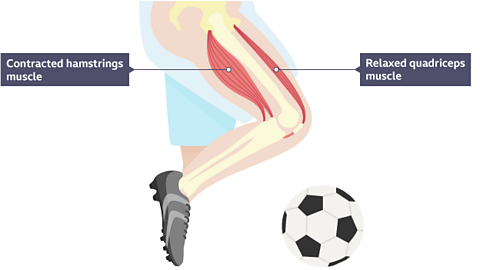
Image caption, The hamstrings contract and bring the shin back as the quadriceps relax
Image caption, The hamstrings relax as the shin is brought forward and the quadriceps contract
1 of 2
Elbow
The elbow joint has two muscles that move the forearm up or down. These are the biceps on the front of the upper arm and the triceps on the back of the upper arm.
- To raise the forearm, the biceps contract and the triceps relax.
- To lower the forearm, the triceps contract and the biceps relax.
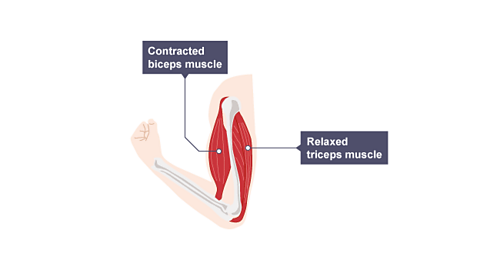
Image caption, The biceps contract and raise the forearm as the triceps relax
Image caption, The triceps contract and lower the forearm as the biceps relax
1 of 2
Test your knowledge
Quiz
Test questions
Write a paragraph to answer the following question. Tap 'Show answer' to see five points you could have included.
Describe the specific muscles that work to move your elbow.
- Muscles that pull on bones are called skeletal muscles.
- Skeletal muscles can only contract and relax.
- So skeletal muscles work together in antagonistic pairs.
- To raise your forearm, the biceps contract and the triceps relax.
- To lower the forearm again, the triceps contract and the biceps relax.
Atomic Labs game. gameAtomic Labs game
Try out practical experiments in this KS3 science game

More on Living organisms
Find out more by working through a topic
- count7 of 15
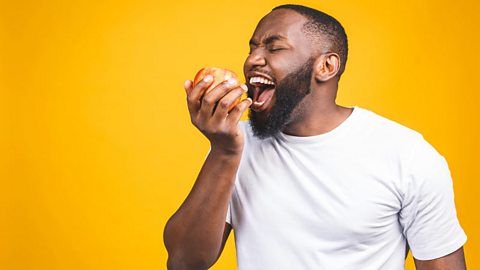
- count8 of 15
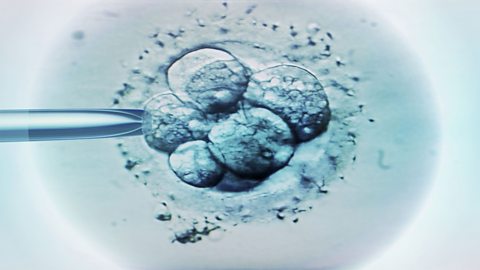
- count9 of 15
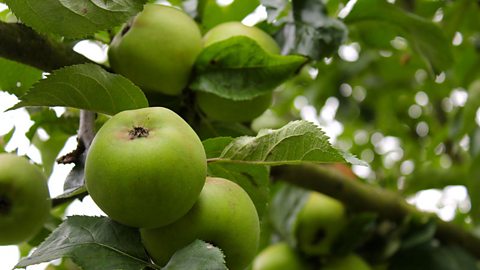
- count10 of 15
